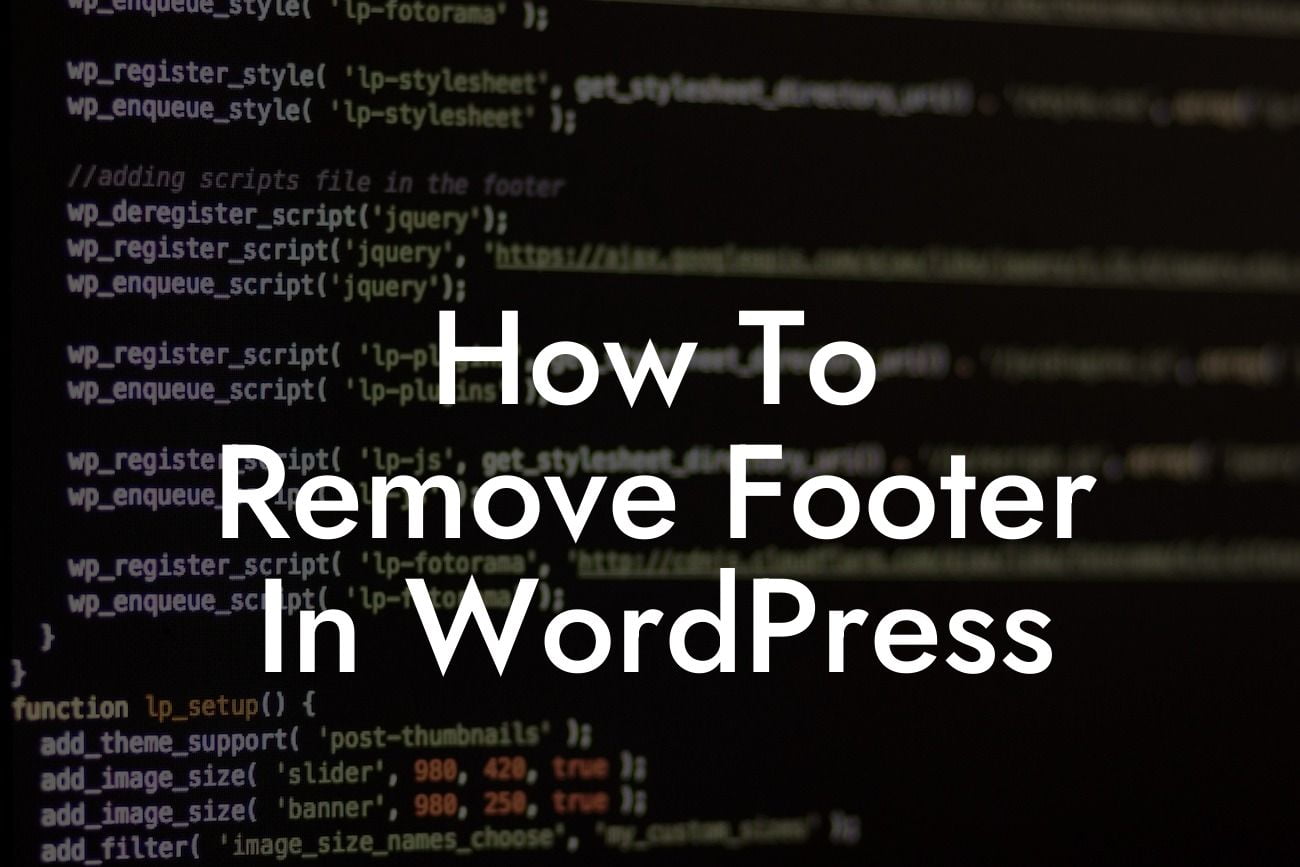Are you tired of the cluttered look that your WordPress footer brings to your website? Does it hinder your efforts to create a clean and professional online presence? Well, fret no more! In this article, we will guide you on how to remove the footer in WordPress, allowing you to achieve a more streamlined and polished website design.
To remove the footer in WordPress, you have a few options depending on your specific requirements and preferences. Let's explore the different methods:
1. Theme Customization:
Some WordPress themes offer built-in options to customize or remove the footer. You can navigate to the theme customization settings in your WordPress dashboard by going to "Appearance" and then "Customize." Look for the footer customization section, which might be labeled differently based on your theme. Here, you can hide or disable the footer, or even modify its content if the theme allows.
2. Editing the Theme Files:
Looking For a Custom QuickBook Integration?
For those with a bit more technical know-how, you can manually edit your theme files to remove the footer. Firstly, access your WordPress files via an FTP client or file manager. Locate the theme folder you are using, usually found in the "wp-content/themes/" directory. Look for the footer.php file and open it in a text editor. Remove or comment out the code related to the footer, and save the changes. Refresh your website to see the updated design without the footer.
3. Using a Plugin:
If you prefer a simpler and more beginner-friendly solution, you can opt for a WordPress plugin to remove the footer. Several plugins offer this functionality, such as "Remove Footer Credit." Install and activate the plugin from the WordPress plugin repository, then navigate to its settings page to customize and disable the footer as per your requirements.
How To Remove Footer In Wordpress Example:
Let's consider an example where you have a personal blog built on WordPress and want to remove the footer to achieve a more minimalistic design. You've found a theme you love but its default footer doesn't align with your vision. To remove the footer, you access the theme customization settings and navigate to the footer section. There, you find an option to disable the footer entirely. You save the changes and instantly witness your blog transformed into the sleek, clutter-free online platform you desired.
Now that you've learned how to remove the footer in WordPress, you can take your website's design to the next level. Don't forget to explore other informative guides on DamnWoo to enhance your online presence further. Additionally, check out our awesome WordPress plugins, carefully crafted to boost your success. Share this article with your fellow website owners who might benefit from a footer-less design, and let's create extraordinary websites together!













